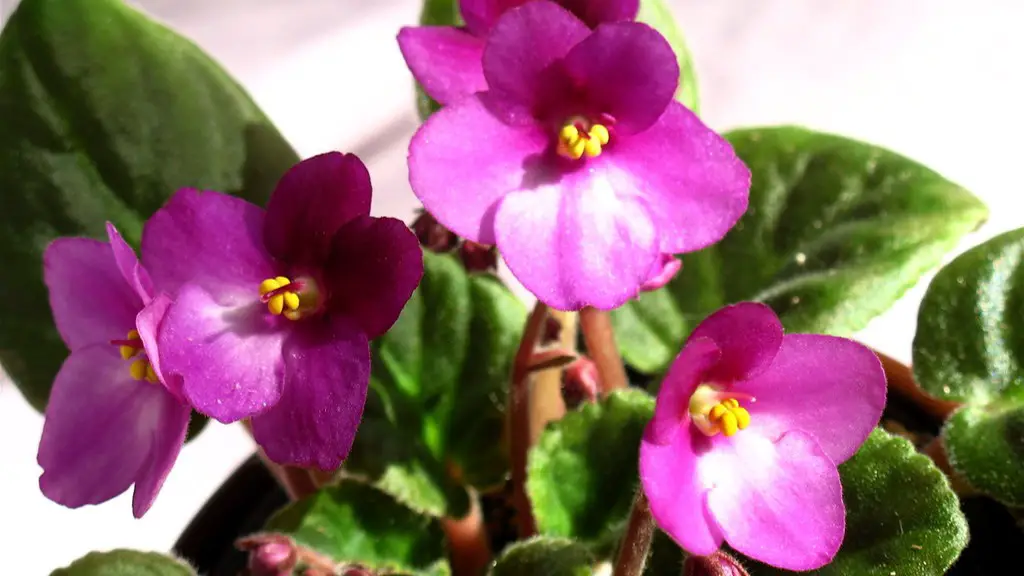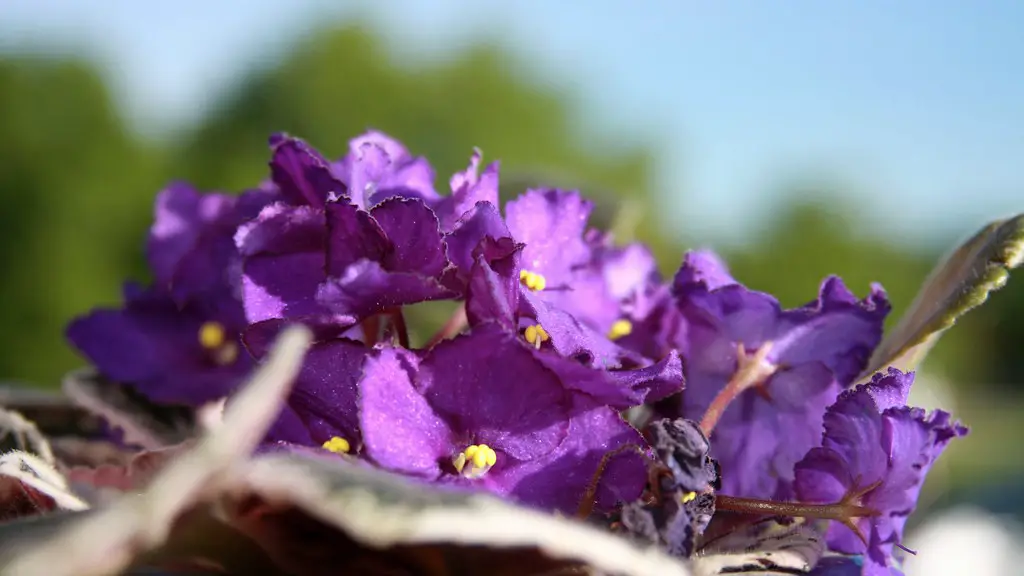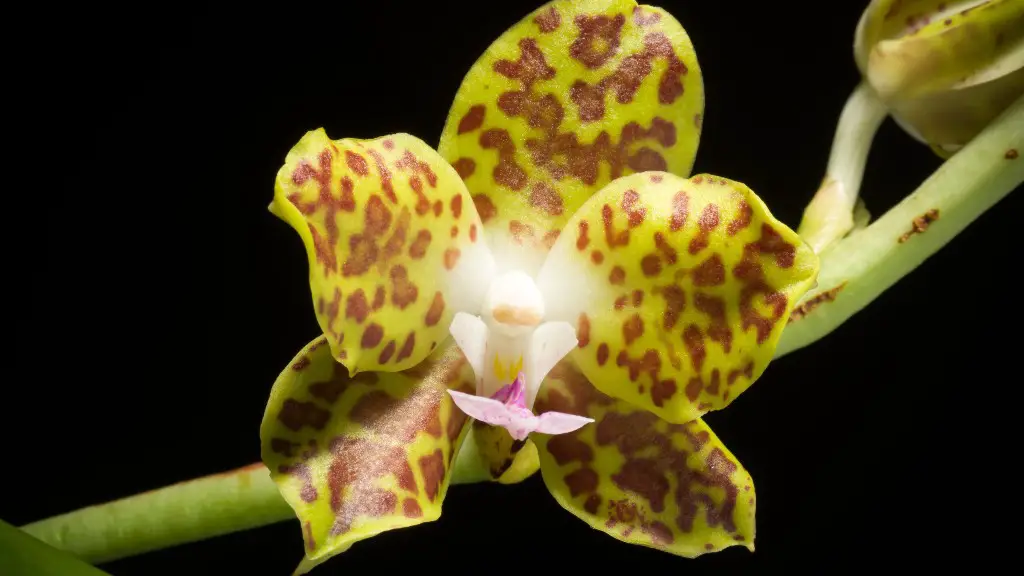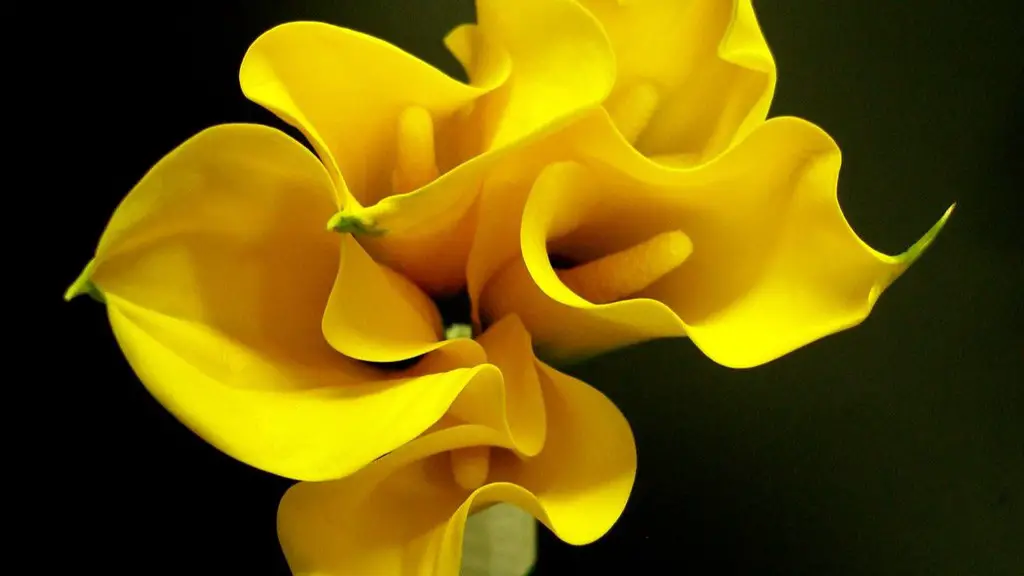African violets are a type of indoor plant that is popular for its colorful flowers. The plants are native to Africa and typically thrive in warm, humid environments. African violets require relatively little maintenance and can be grown in a variety of containers.
African violets (Saintpaulia) are a genus of 6–20 species of herbaceous perennial flowering plants in the family Gesneriaceae, native to Tanzania and adjacent southeastern Kenya in eastern tropical Africa.
How long do African violets live indoors?
“They are slow-growing plants and need to be repotted every one to two years to keep them healthy and thriving.”
African violets need indirect sunlight in order to thrive. Direct sunlight can actually burn the leaves of the plant, so it’s important to choose a north- or east- facing window for best results. Additionally, it’s important to keep the plants away from cold glass and to rotate the pot once a week so that all leaves receive light. During winter months, you can extend the amount of daylight that the plant receives by placing it under a grow light.
Where is the best place to keep African violets
African violets are best placed in a location that receives bright, indirect light. A site near an east or north window is often a good location. However, do not place African violets in direct sun, as this can damage the leaves. If a suitable window isn’t available, African violets can be placed under a fluorescent light fixture containing two 40-watt fluorescent tubes.
A wicking system is a simple way to water your African violets without having to worry about over watering them. All you need is a container with a wick, some water, and a way to keep the wick moist. The wick will draw water up from the container and into the soil of the plant, keeping it moist but not soggy.
Should African violets be watered from the top or bottom?
If you are unsure whether to water your African violet from the top or bottom, either method is fine. The most important thing is to avoid using cold water; lukewarm or warm water is best for the plant. If you do choose to water from the top, be careful not to get water on the leaves when the plant is in direct sunlight. This could cause leaf spots.
African violets do best when they are slightly pot-bound, so choose a pot that’s on the smaller side. A professional tip is to choose a pot that is about 3-4 inches in diameter for a standard African violet plant.
How long do you water African violet?
After 20 minutes, remove the plant from the water and let it drain for a few hours.
African violets require consistent watering, but be sure not to overwater them. By immersing the pot in water for 20 minutes, you can ensure that the plant gets enough water without being overwatered.
If you want your African Violet to stay healthy throughout the year, you need to fertilize it regularly. During the spring and summer, you should fertilize your African Violet once every 14 days. In the fall and winter, you shouldn’t fertilize the plant at all to prevent over-fertilizing.
Should I mist my African violets
Hi!
Just wanted to quickly share some tips on watering African violets – since they’re such delicate and beautiful plants, it’s important to be extra careful with them!
First, never mist the foliage – water on the leaves can cause permanent spotting. Instead, water the plant at the base, making sure that the soil is moist but not saturated. It’s also best to use room-temperature water, as cold water can shock the plant.
African violets are also susceptible to crown rot, so it’s important to not over-water and to keep the crown area dry.
Hope these tips help!
If you want your plants to have the best color and blooms, grow them in bright, indirect light. A plant stand three feet away from a west- or south-facing window is an ideal location. Plants will still grow when situated right beside north- or east-facing windows, but leaves will be thin and spindly, and plants less likely to bloom.
What month do African violets bloom?
Assuming you would like tips on how to get your African violets to bloom nearly year-round:
African violets are happiest when they are pot bound, so don’t be afraid to let them crowd a bit in their pot.
They like bright, indirect light and humid conditions—a humidity tray or pebble tray filled with water can help provide the right environment.
African violets also like to be on the drier side, so allow the soil to dry out between watering.
bloom booster fertilizer
African violets need very porous soil to thrive. This allows the plant to get the appropriate amount of moisture and aeration, and ensures that the African Violet remains happy in a well-drained pot. African Violets don’t like wet feet, so make sure the soil is well-drained to avoid problems.
Can I water African violets with tap water
Please be advised that in most locations, tap water will be fine for your African violets. However, the quality of tap water can vary depending on the location. Chlorine levels may fluctuate, depending on the season. In some areas, tap water may have high amounts of chlorine, chloramines, or dissolved solids. All of these things may adversely affect your African violets.
To clean African Violet leaves, fill a spray bottle with room temperature or tepid water. Spray the leaves with water and clean the leaves using your fingers, rubbing the top and bottom part of the leaves. You can also use the spray bottle method to clean the African Violet leaves with liquid soap.
How do I get my African violet to bloom again?
If your African violet isn’t blooming, there are a few things you can do to encourage it to flower again. Start by making sure it has enough light – it should be in a spot that gets bright, indirect sunlight. Next, turn up the humidity by misting the leaves regularly or placing the pot on a tray of pebbles and water. The third step is to replenish essential nutrients – African violets need to be fed a balanced fertilizer every other week during the growing season. Fourth, keep the temperature around the plant pleasant – it should be in a spot that stays between 65 and 75 degrees Fahrenheit. Fifth, choose the right soil – African violets do best in a light, well-draining potting mix. Sixth, protect the plant from pests and disease – inspection and quarantine of new plants is essential, and regular treatment with an insecticidal soap or neem oil will help keep problems at bay. Finally, constrict the roots – African violets need to be pot-bound to bloom well, so when the roots start to fill the pot, it’s time to transplant to a slightly larger one. With a little care, you can get your African violet to bloom again in no time!
If you have an African Violet that is blooming, be sure to pinch or deadhead the spent blooms. This will allow the plant to continue to put energy into creating more buds/blooms and beautiful foliage.
Warp Up
Yes, African violets are indoor plants.
African violets are a type of plant that is typically grown indoors. These plants are known for their colorful flowers and their ability to thrive in low-light conditions. While African violets are relatively easy to care for, they do require some specific care in order to maintain their health and prevent them from dying.





